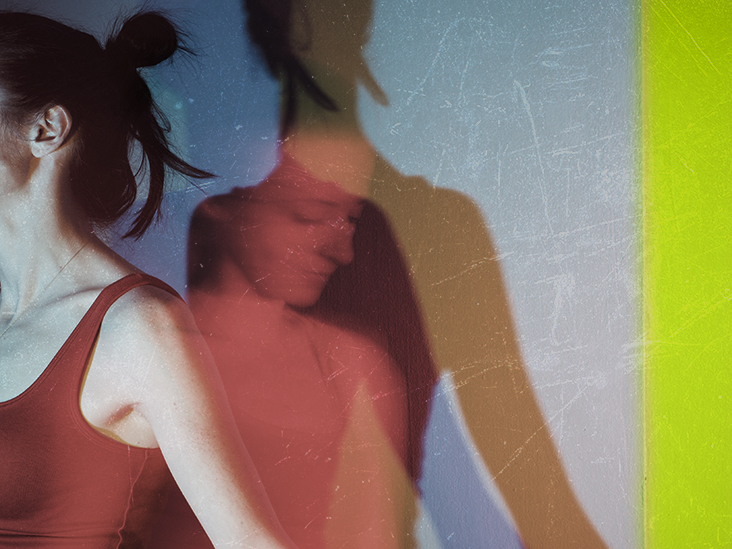Bipolar disorder (BD)is a mental health condition causing extreme mood shifts. During a person’s menstrual cycle, they may experience a worsening of their BD symptoms.
This makes the premenstrual period, or time before menstruation, particularly difficult for some people.
Read more to learn more about how premenstrual syndrome (PMS) affects people with BD, how it is treated, and more.
BD is a mental health condition characterized by shifts in mood, concentration, and energy levels. These changes affect a person’s ability to perform day-to-day tasks.
According to the National Alliance on Mental Illness (NAMI), about 2.8% of adults in the United States live with BD.
BD is
Although symptoms can be managed with a treatment plan, lifelong treatment is usually needed.
NAMI reports that rates of bipolar disorder in males and females is
One 2021 review claims that studies are skewed by a recent increase in the diagnosis of BD in females. This does not necessarily mean that BD is becoming more common in females — it indicates that healthcare professionals are getting better at recognizing their symptoms.
Researchers theorize that fluctuations in reproductive hormones exacerbate BD symptoms during the menstrual cycle, during pregnancy, and after childbirth.
However, more research is needed to understand this link.
Learn more about bipolar disorder in females.
A person’s menstrual cycle lasts approximately 28 days. It is broken down into two parts: the follicular phase and the luteal phase.
The first half of the cycle is the follicular phase. It is marked by low levels of progesterone, a pro-gestational hormone. Levels of estradiol, a type of estrogen, increase. This results in the release of an egg from the ovaries.
The second half of the cycle is the luteal phase. During this time, progesterone increases, and estradiol spikes again. If fertilization of the egg does not occur, hormone levels fall, and menstruation begins. The cycle then repeats.
PMS and premenstrual dysphoric disorder (PMDD) are caused by these hormone fluctuations. They cause both
Mental and emotional symptoms include:
Physical symptoms include:
Because the symptoms of PMS and PMDD overlap, it can be hard to tell the difference between the two. A person’s individual symptoms may also vary month-to-month.
Learn more about the differences between PMS and PMDD.
Even with adequate BD treatment, some people experience a worsening of symptoms around their menstrual cycle.
This is because the hormone changes causing PMS also affect BD symptoms.
They can cause:
These changes are relatively common.
Managing a person’s PMS and/or PMDD symptoms can prevent the worsening of their BD symptoms. There are several treatment options available.
Before prescribing prescription drugs, a doctor may suggest over-the-counter (OTC) medications.
Some
Certain vitamins and minerals
The best evidence exists for calcium and vitamin B6. These can be found in certain foods, such as dairy products, or taken as a supplement. There is weaker evidence for the PMS-relieving effects of magnesium and polyunsaturated fatty acids (omega-3 and omega-6).
All supplements should be used with caution as they may interact with other medications. Additionally, because vitamins and supplements are not FDA regulated, they should be purchased and consumed very carefully.
There are other
Learn more about home remedies for PMDD.
Some medications used to treat PMS and PMDD should not be used in people with bipolar disorder. One type that should generally be
Commonly prescribed SSRIs include:
Although a doctor may prescribe these medications for the depressive symptoms of PMS or PMDD, they can cause manic episodes in people with bipolar disorder.
It is important to contact a doctor if a person is worried about the potential safety of any medication they are taking.
People with diagnosed bipolar disorder who notice a
Additionally, individuals who think they may have bipolar disorder should contact a doctor. If a person or someone they know is in crisis or considering suicide, they should call 911.
The hormone fluctuations of the menstrual cycle can cause PMS and PMDD. However, people with bipolar disorder may be more affected than others. These changes can worsen their bipolar symptoms.
A person who notices significant mood changes around their menstrual cycle can seek treatment for their symptoms. Adjusting their treatment plan accordingly will help stabilize their mood.
Last medically reviewed on July 26, 2021
8 sourcescollapsed
The characteristics and the effects of bipolar disorder can be different for females. Learn more here, including how hormonal changes may play a role.
Premenstrual dysphoric disorder is a severe form of premenstrual syndrome. Symptoms are often intense enough to disrupt daily activities, and they…
Depression is a common symptom before and during a period. Find out why hormonal changes during the menstrual cycle can contribute to depression and…
Many females experience mood swings before a period. Read on to learn the causes and symptoms of premenstrual mood swings and the treatment options…
There are five categories of bipolar disorder. Bipolar I and II occur most frequently, while other types are less common. Learn more about the…
OUR BRANDS
